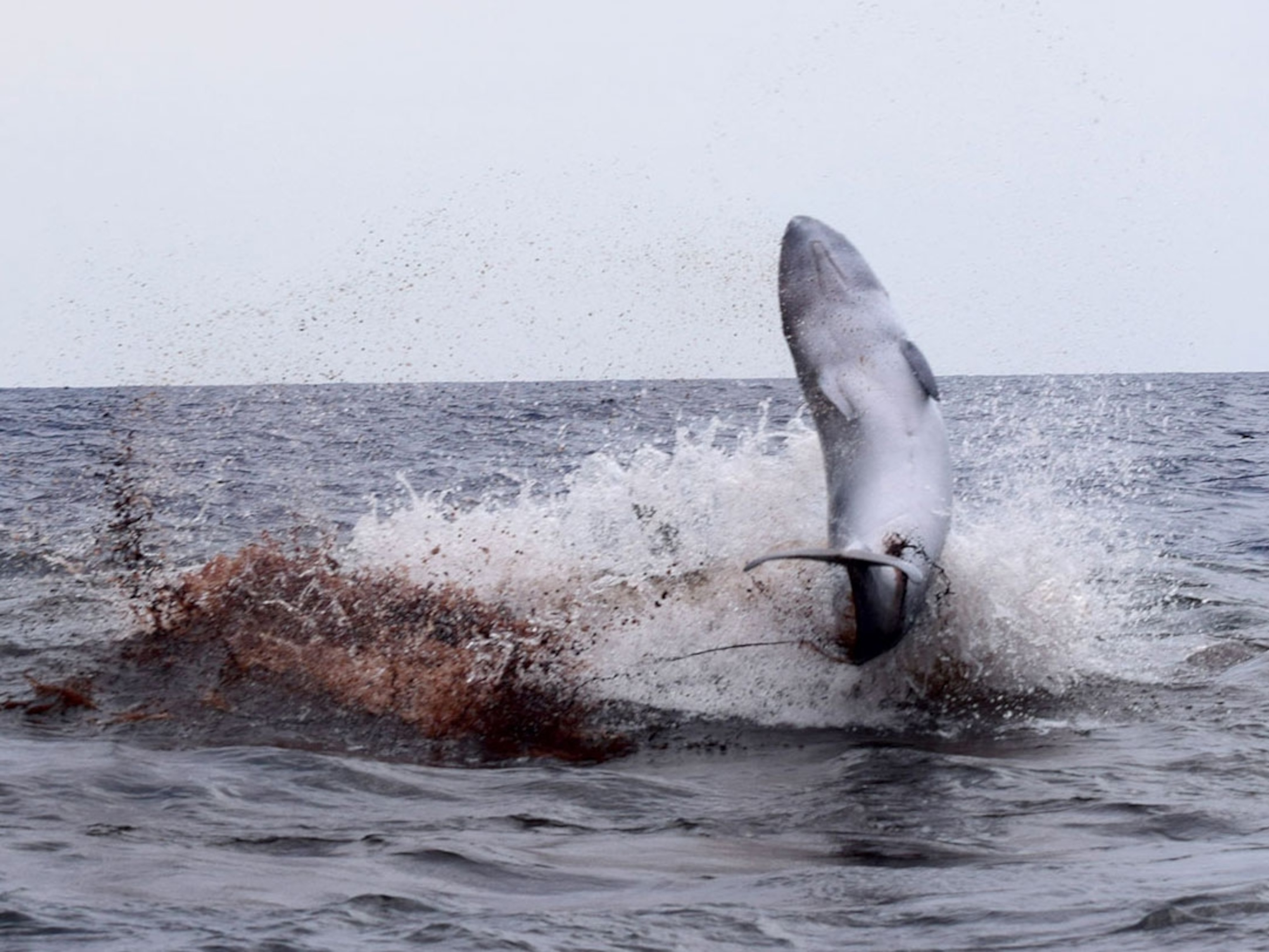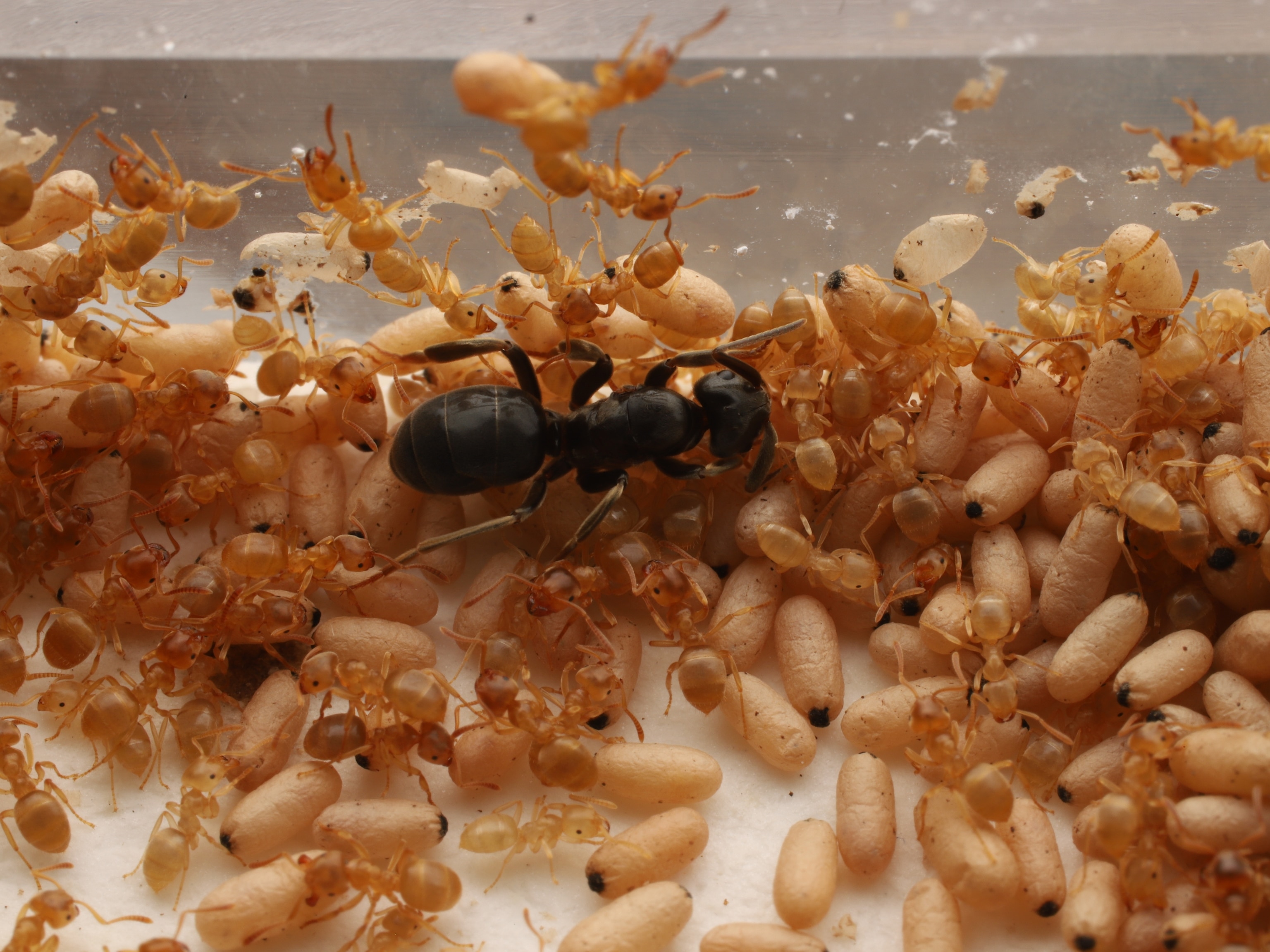Deadly Snake Wags Tongue to Lure Its Prey—A First
Africa's puff adder is the only known snake to attract its victims with both tongue and tail, a new study says.
Xavier Glaudas was watching a video of one of the world's deadliest snakes when something made him pause and rewind.
“I couldn’t believe what I was seeing,” he says.
On the film, a puff adder (Bitis arietans) had extended its tongue, leaving the tip curled up—unlike the usual flicking in and out to sense its surroundings.
Instead, the snake appeared to be mimicking an insect's movements by wagging its tongue slowly and deliberately to attract a nearby toad.
Glaudas, a herpetology postdoctoral student at South Africa's University of the Witwatersrand, knew this was unusual—no land snake is known to use such a technique to lure prey.
When Glaudas and his advisor Graham Alexander reviewed more video clips, they found 11 instances of the behavior in nine different puff adders, which were filmed hunting in the wild in South Africa. (Watch a bird mimic a caterpillar, and other animal imposters.)
“This is the first time this behavior has been recorded in terrestrial snakes. It’s pretty cool,” says Kerry Hansknecht, a herpetologist at Lander University in South Carolina who wasn't involved in the study.
Violent Strikers
Other animals—snapping turtles, aquatic birds such as egrets, and aquatic snakes—sport tongue lures. Hausknecht, for instance, has discovered similar behavior in the aquatic mangrove saltmarsh snake. (See more amazing snake pictures.)
Scientists knew that the venomous puff adder is an ambush predator, lying in wait until prey such as frogs, toads, small mammals, and birds approach, and then attacking. (Their Latin name, arietans, means “striking violently.")
But beyond this basic strategy, not much was known about how puff adders hunt, says Glaudas, whose research was funded by the National Geographic Committee for Research and Exploration. (See "New Venomous Snake Found: Death Adder Hiding in Plain Sight.")
So Glaudas and Alexander captured 86 puff adders, implanted tiny radio transmitters into their bodies, and tracked their movements inside Dinokeng Game Reserve.
The researchers set up their video cameras near where the snakes liked to wait for prey. The reptiles eat about once every 10 days or so, hunting at night and sleeping during the day.
Deadly at Both Ends
In total, the team recorded 193 continuous days of footage, which revealed many examples of tongue luring, according to the study, published recently in the journal Behavioral Ecology and Sociobiology.
Interestingly, the snakes only used their tongue lures when they saw amphibians, and not mammals and birds. Glaudas believes it's because the puff adders have learned the tongue movements only attract those species.
Glaudas and Alexander also discovered that the snakes used their tails to mimic insects, a strategy that targets birds. (Read about a snake whose tail mimics a spider in order to catch birds.)
Tail-luring behavior is much more common in snakes, but the puff adder is the only snake known to use both tail and tongue as lures.
“We think of snakes as being unsophisticated," Glaudas says, "but this research is showing that’s not the case."
Follow Carrie Arnold on Twitter.





